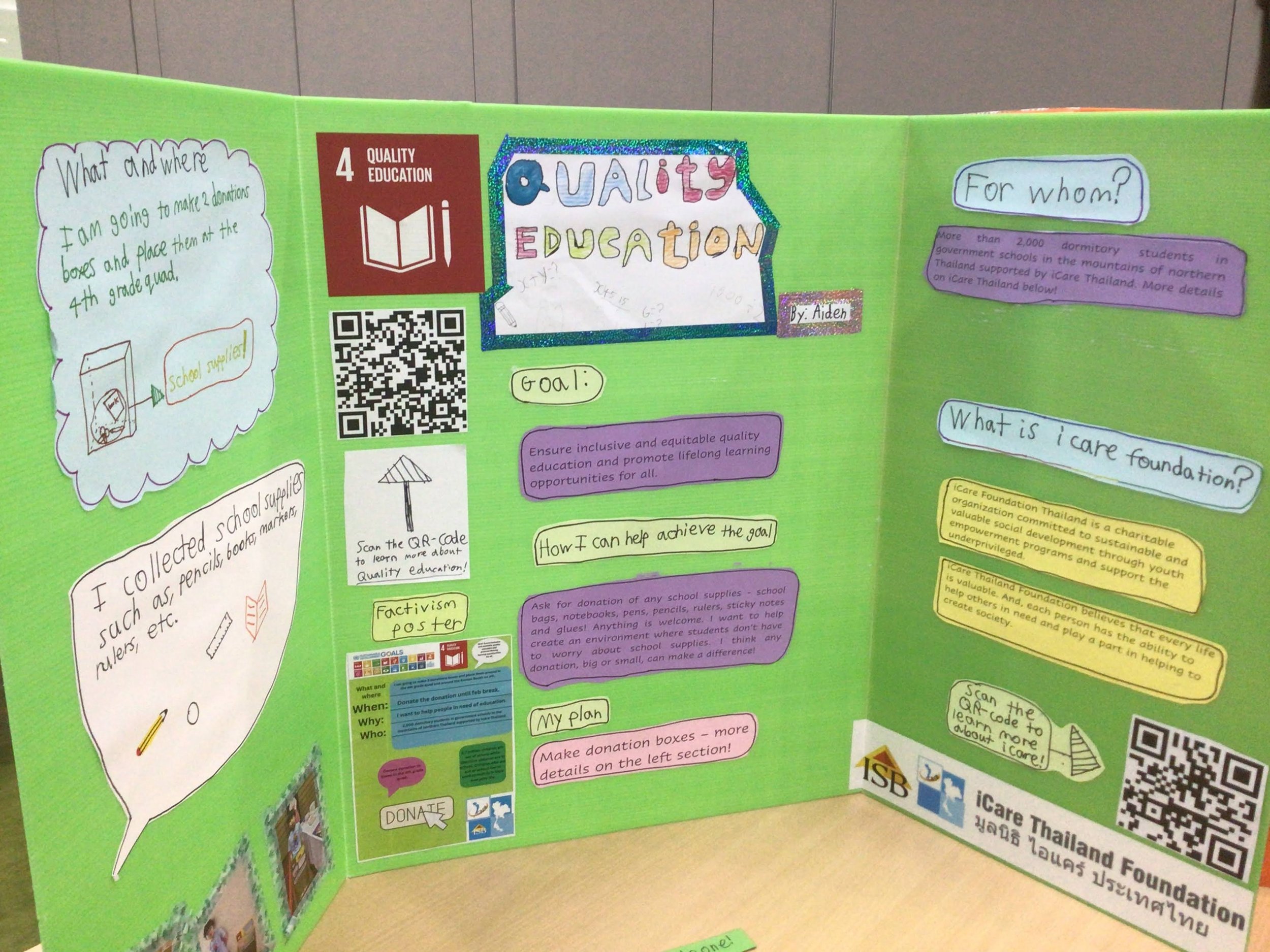When are Issues “Too Big”... and When Are They Not?
It’s a moment every educator cherishes: sunshine is streaming through the windows as a fourth grader comes running into the classroom. He nearly trips over his own feet as he can’t wait to share with his teacher (and anyone else within earshot!) that, “We DID it! We’re HELPING!”
This story exemplifies how a thoughtful learning framework being implemented at the International School Bangkok is not just a theoretical model but a living practice that drives real-world change. Educators like fourth grade teacher Sarah Bruce are reimagining educational experiences to foster student leadership, empathy, and actionable impact, aligning with global goals.
Deploying the Empathy to Impact Model: Starting the Journey
Sarah and her co-teacher have been exploring new and exciting territory as they guide their students on a journey in a unit of study called Empathy to Impact. The unit draws its title and intention from the framework of the same name that was developed and popularized by the founders of Inspire Citizens.
It was actually a larger vision of enhancing student leadership that originally landed Inspire Citizens on the scene at IS Bangkok. A collaborative team involving Director of Curriculum and Professional Learning Jennifer Delashmutt saw an unlikely opportunity in the middle of the pandemic to capture the attention of students who needed options to channel their extracurricular energy through the period of isolation. Inspire Citizens founder Aaron Moniz and facilitator Scott Jamieson then developed a bespoke series of modules to elevate student leadership potential.
Jennifer recounts the achievement with pride as, ultimately, “we had our own student-led leadership workshop for kids who were becoming officers in our clubs and councils.” This self-perpetuating cycle of leadership development continues to deepen the empowerment of students at ISB.
The spillover effect of having access to IC’s broader range of services led to some additional professional development pathways. “We were especially interested in incorporating the United Nations Sustainable Development Goals and more of a project-based approach to units that teachers selected,” Jennifer explains.
When Sarah became aware of the option to participate in this type of professional development, she jumped at the opportunity. In fact, Sarah’s pedigree of service mindedness was already established through several encounters with service learning professionals - including Inspire Citizens - at previous top schools where she had worked.
Real-World Outcomes: Linking to the SDGs
Through the Empathy to Impact framework, students view global issues as something they can address on a local scale
The incident involving the enthusiastic student described earlier is only one of several authentic outcomes that have naturally emerged from realigning curricular objectives around student-selected topics of importance. A hallmark of the Empathy to Impact framework is the natural alignment of student inquiry with the UN Sustainable Development Goals. From the wide range of conceptual territory in the SDGs, Sarah says goals relating to poverty and access to education rise to the top for her fourth graders. Health and well-being often capture attention, as well.
How fired up are students about the SDGs? Sarah recounts an incident in which a student came to class and told her about an interaction at home: “The student came in and said ‘I was talking to my dad about this and… I saw that he has the SDGs framed on his desk!’”
By leaning into the fact that many parents in the ISB community are involved with the United Nations, various embassies, the World Bank and other multinational organizations, Sarah is facilitating learning that has more perceived weight and importance for students. Undoubtedly, the emphasis is building in the “impact” portion of the Care-Aware-Able-Impact framework of Empathy to Impact.
From Long-range Planning to Impromptu Parent Participation
Caring made visible: Students and parents interact on themes of global significance at ISB
Sarah and Jennifer agree that the strides taken thus far are leading to more ahead. This multi-stage implementation support process began with the intention to level up outcomes by refocusing more traditional initiatives. A meeting of stakeholders from across the community was held nearly eight months in advance, paving the way for broader acceptance of student advocacy initiatives. And waves of positive change continue to ripple outwards from starting points at ISB; the best evidence for success is seen in one final story from Sarah’s fourth grade classroom:
“There was a group of girls and they wanted to make these bracelets, not to sell, but to give away,” says Sarah. “The bracelets had eight different words or phrases on them - things like ‘kindness’ or other affirmations.”
It was a beautiful idea, Sarah recalls, but the realities of mass producing 70 bracelets started to pile up. One of the girl’s parents became involved as part of the final rally so all the bracelets could be assembled, tied and waxed in time for a distribution event. “I apologized to the mom as I saw how much time she invested over a weekend, but the parent was insistent that it was she that was grateful,” Sarah remembers. The parent was genuinely pleased to play a role by coming alongside her daughter to bring a beautiful and impactful vision to life.
Celebrating the Bigger Opportunities to Educate Global Citizens
At the International School Bangkok, students are not just learning about the world—they are actively changing it. The initiatives that have taken root under the Empathy to Impact framework go beyond traditional education, fostering not only knowledge but also passion and a sense of responsibility towards global challenges. As these young minds continue to engage with real-world issues through their studies, they are set to become not only leaders but also conscientious global citizens, poised to make meaningful contributions in increasingly interconnected environments. This approach exemplifies the potential of education to transcend the classroom to embrace the complexities of our global community.
An empathetic approach to poverty exemplifies an educational eperience that takes students beyond the classroom to appropriately embrace socially complex issues.




